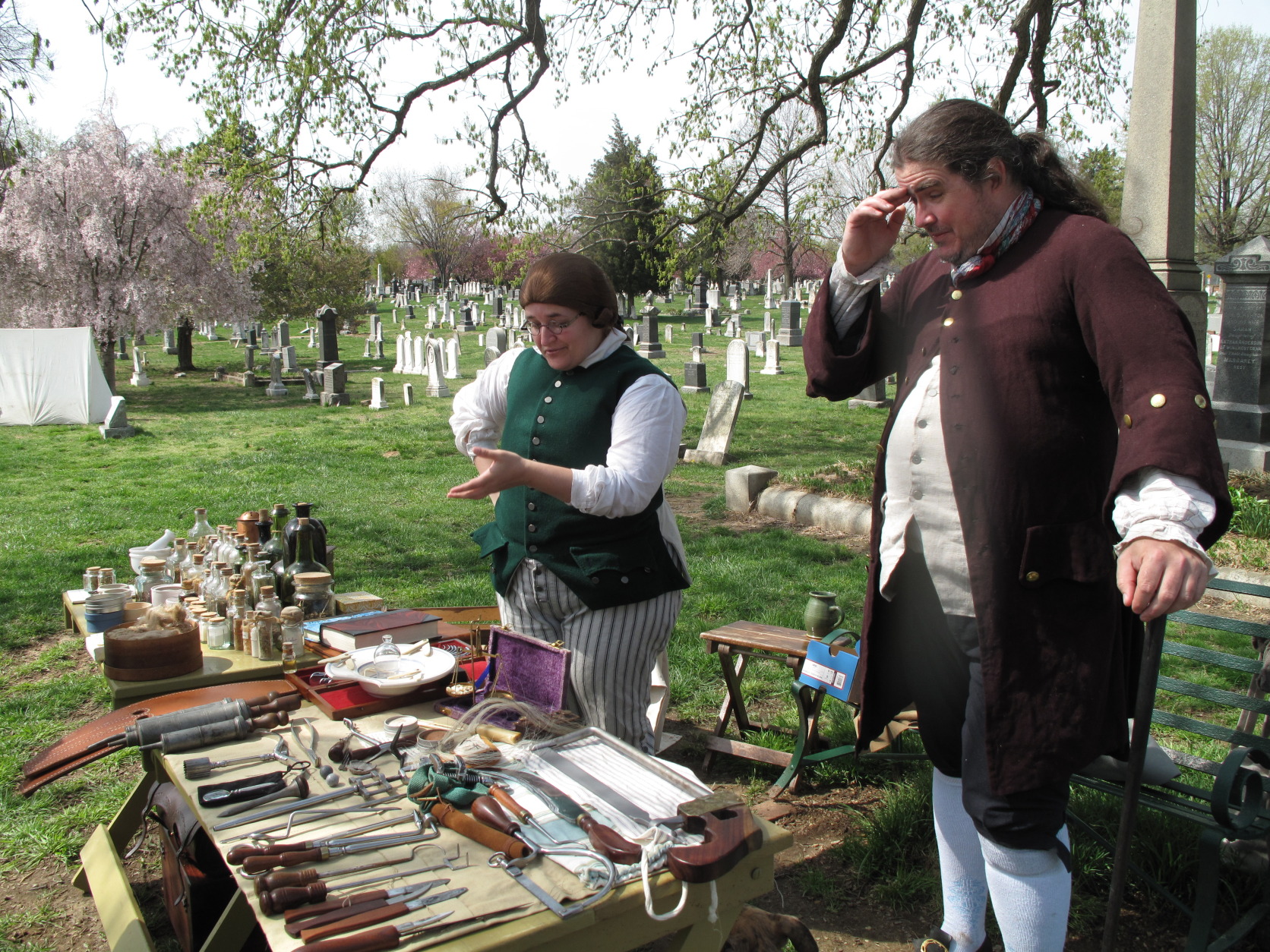
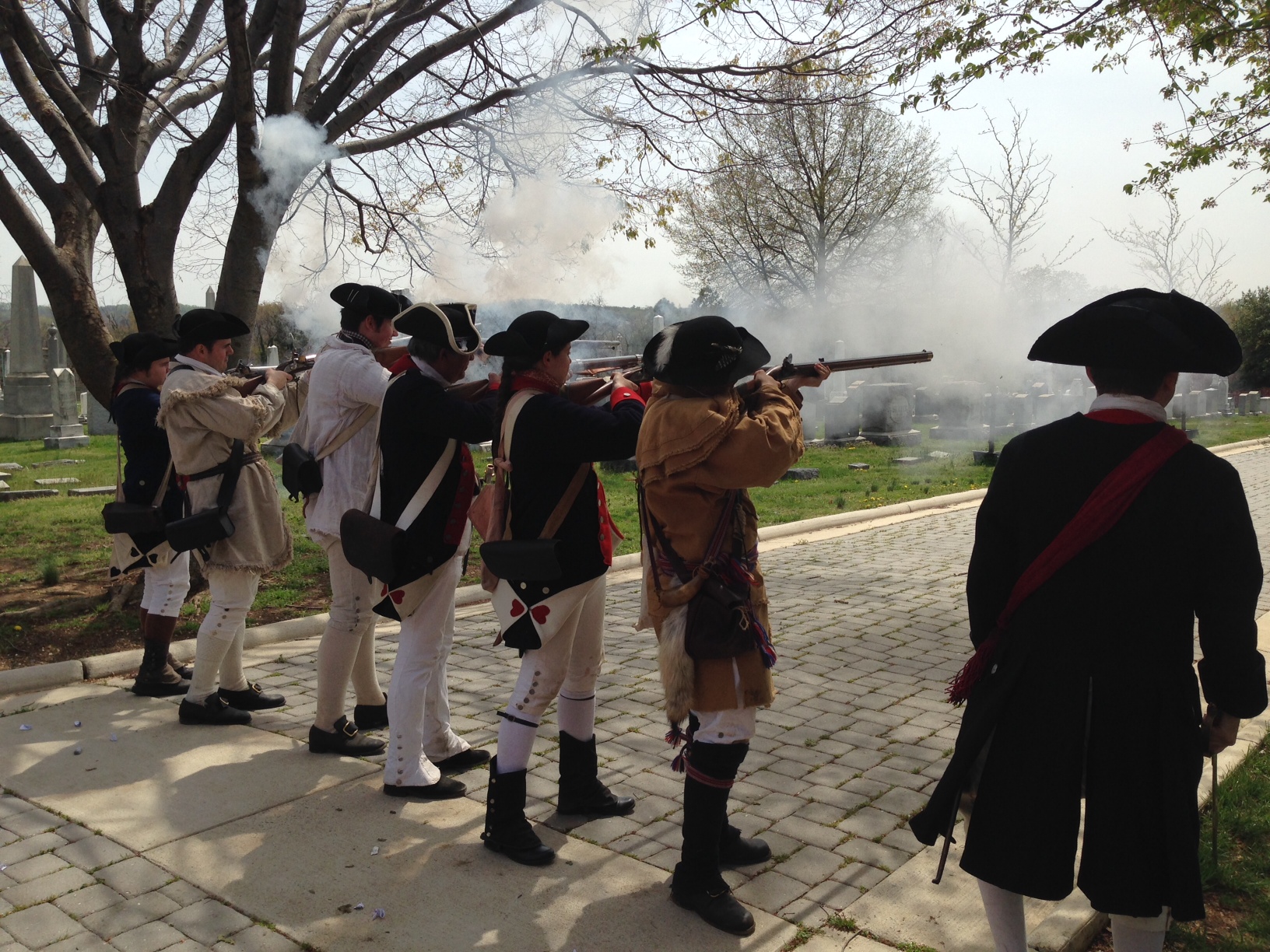
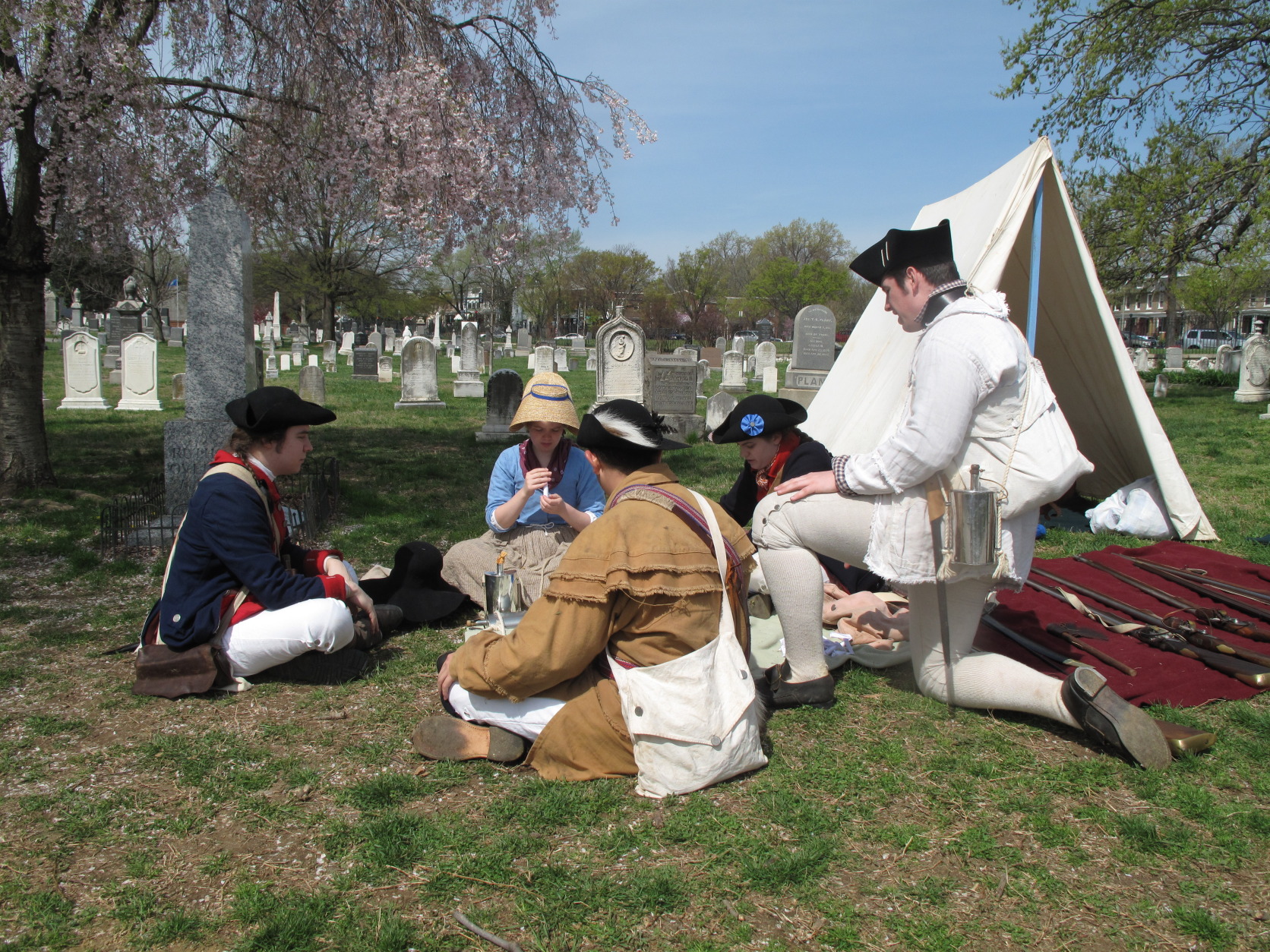
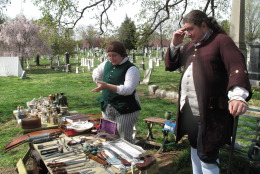
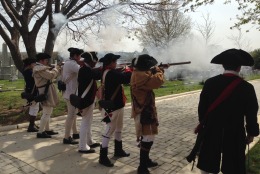
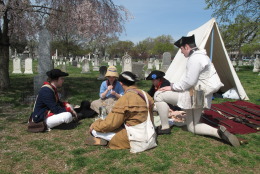
WASHINGTON — Men in woolen breeches with tri-corner caps stirred the imagination about days gone by and America’s Revolutionary War.
All along the firing line, musket bearers raised their weapons and waited patiently until they heard the command – “fire!”
Muskets answered with loud bangs. Puffs of greyish-white smoke and the smell of black powder filled the air.
The demonstration was part of Revolutionary War Day at one of Washington’s most historic sites – Congressional Cemetery.
“We actually do have a lot of the veterans who fought in the Revolutionary War interred here,” says Lauren Maloy, Congressional Cemetery’s program director.
The Monumental City Fife and Drum Corps of Baltimore marched between the rows of graves, their jet-black breeches, spats and bright-red vests stood out against the gray, granite gravestones.
Congressional Cemetery is considered the first of the national burying grounds. It was founded in 1807 when Thomas Jefferson was president.
There are many figures who made their mark on Washington history buried at Congressional, including John Phillip Sousa, the Marine Corps band director who became America’s “March King,” Civil War era-photographer Matthew Brady, and the nation’s first FBI director J. Edgar Hoover.
Mary Hall is one of the more peculiar personalities laid to rest at Congressional Cemetery.
“[She] owned a brothel, one of the best brothels in Civil War-era Washington D.C.,” Maloy says, “and her brothel is where the National Museum of the American Indian is now, and she’s buried here and has quite a large plot.”
Revolutionary War day helps kick off tour season at Congressional Cemetery. Tours are free through October.
Follow @WTOP on Twitter and WTOP on Facebook.







